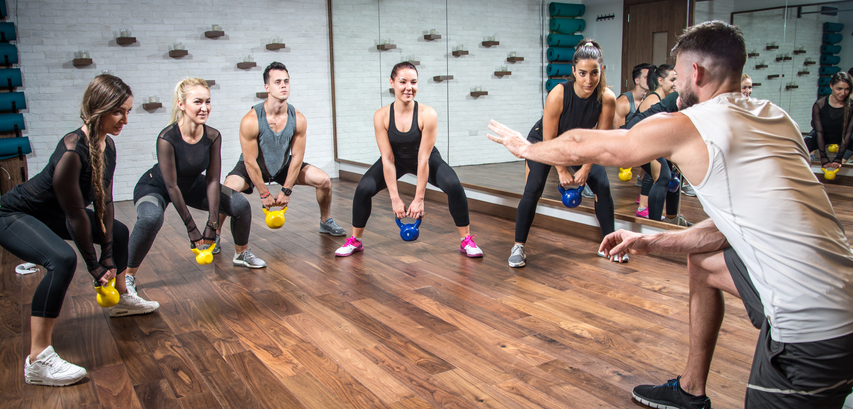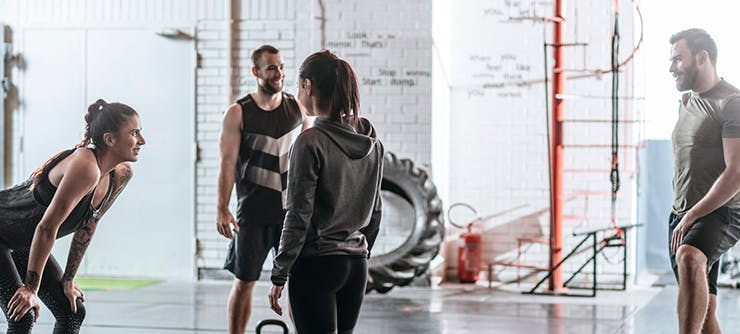We asked Chris Salmon from Quittance Legal Services to discuss disclaimers and how you can best use TeamUp's waivers and forms to keep your customers informed and on the same page. With new regulations and laws changing during the ongoing global pandemic, we want to make sure you have the best resources to protect your business and your customers. Here's what he had to say:

Disclaimers, waivers and exemption clauses
Disclaimers, exclusion clauses, exemption clauses and waivers are all terms used (often interchangeably) for legal statements that are designed to limit one party’s liability.
A disclaimer might be a stand-alone document or a paragraph buried in a broader set of terms and conditions. In some cases, it might just be a warning sign.
Signing a disclaimer is a matter of course for anyone wanting to engage in an activity where there is an element of risk. Anyone wanting to do a parachute jump, charity run, school trip or even use a bouncy castle, will usually be required to sign a disclaimer.
People accept that they will be unable to participate in an activity if they refuse to sign a disclaimer - so most people sign without a second thought.
How do disclaimers work?
Gyms ask all new members to read and sign their terms and conditions when joining. The T&Cs usually include an injury disclaimer.
A new member would then usually be taken through an induction process. During the process, a qualified employee or trainer will go through a site-specific orientation of how to safely use the gym’s equipment.
With the paperwork signed and the induction process completed, gym operators might think they are absolved from any responsibility if the member is subsequently injured.
But is this actually the case? Could a gym still be held liable if an injury occurs - even when a disclaimer has been signed?
When a disclaimer might not protect you from a claim
The risk of being injured at the gym is often underestimated. Research has revealed that two in five UK gymgoers have injured themselves whilst training.
Most gym injuries result from overexertion or poor form. However, accidents resulting from faulty equipment, health and safety breaches, poor instruction and forgotten or inadequate inductions are still common.
“I hereby assume full responsibility…”
Typically the disclaimer will ask the new joiner to warrant that they are in good health and that use of the gym will not knowingly impact their health.
The member may also be required to confirm that they are aware of the risk of injury involved in using the gym equipment. Some disclaimers ask the gymgoer to accept “full responsibility for any and all injuries”, absolving the gym owner of any liability if the gymgoer is injured.
Some disclaimers go further in stating, quite bluntly, that the operators of the gym cannot be held liable in the event of injury or death occurring while the member is using the gym.
Disclaimers like these help to underscore the inherent health risks of gym activities and might help discourage nuisance claims. However, it is unlikely that most injury disclaimer clauses have any legal power.
Do gyms need legal advice when drafting a disclaimer?
It would not normally be necessary to seek bespoke legal advice when drafting a gym disclaimer or waiver. TeamUp offers activity-specific waivers and automated ParQ collection to gyms and fitness businesses online. The system allows gyms to collect the right information from their customers at the right time.
Waivers or safety questions are tailored to specific classes or memberships. The forms can be fully integrated with a gym’s online booking process to ensure that the customer has completed any safety requirements before booking classes.
The more specific a waiver is, the more effectively it will highlight risks to members and class participants. More specific waivers, when accompanied by a detailed health questionnaire, are more likely to afford the gym at least some legal protection in the event an injury does occur.
Unfair Contract Terms Act 1977
A disclaimer cannot be used to completely firewall a business from liability for injuries suffered by the gym user. There is no perfect turn of phrase or wording that could protect a gym from liability.
The Unfair Contract Terms Act 1977 regulates contracts by limiting the extent to which one party can avoid liability through the use of exclusion clauses such as disclaimers. Under the Act, terms or clauses that seek to limit liability for death or personal injury as a result of negligence are not legally enforceable.
Even if a gym member wanted to, they cannot lawfully sign away their fundamental legal rights.
Gyms, pools, health clubs and yoga centres are all subject to the Act.
If a gym user is injured as a result of the gym operator’s negligence, they can usually take legal action against the gym and seek financial compensation for their injuries. If the injury is solely the member’s fault, however, they cannot usually claim.
Where is the line between negligence and a self-inflicted injury drawn?
Gym’s negligence vs members’ carelessness
The gym has a legal duty to ensure that all areas accessible by its members or the general public are safe, and the risk of injury is minimised. A failure in this duty of care would be deemed negligent and the gym would be liable for any injury that resulted from its negligence.
A self-inflicted injury would be when a gym user was injured due to overexertion, using equipment for the wrong purpose, or behaving recklessly.
However, the distinction between an owner’s negligence and a gymgoer’s fault can be complicated.
For example, If a defective treadmill was to stop suddenly (due to mechanical failure) leading to an injury, the gym owner would likely be considered negligent for the provision of defective equipment.
If a gym user had been shown how to correctly use a treadmill, and yet was using the equipment incorrectly, hopping rather than running, the injury could be seen as self-inflicted.
The line would blur if, for example, the user’s shoelaces were untied and they got caught in the running belt. Here the gym would likely still be liable as shoelaces becoming untied is a foreseeable accident. The treadmill should therefore have a safety guard or safety key off to prevent injury.
However, if the user had not attached the safety key to their clothing, this may absolve the gym from liability.
Where both sides are partly to blame, the injured gymgoer can usually still claim, but the compensation award may be reduced.
Foreseeable accidents and reasonable steps
If a hazard exists, and it is reasonably foreseeable that the hazard could cause injury, then a gym owner must take reasonable steps to ensure the risk is managed. What counts as ‘reasonable’ will depend on the situation.
Take wet floors in changing rooms as an example. It is obvious (foreseeable) that a gym user could slip on a wet floor. It is not reasonable or practical for a gym to hire someone to stand by with a mop 24/7, ready to instantly clean up any drips or spills.
However, it might be reasonable for the gym to assign someone to check on the state of the changing room floor on a regular basis, and mop up any spills. It would likely also be reasonable for the gym to install non-slip mats or tiles in high-risk areas like the showers, and to put up signs warning of the danger.
If you don’t take reasonable steps to protect gymgoers from hazards, and a member is injured, it is likely that your gym would be held liable for the injury.
Other examples of when a gym might be held liable include:
- A personal trainer or gym employee giving incorrect advice on how to use equipment
- A missed induction or induction being carried out by an unqualified individual
- Poorly-stowed equipment, or inadequate storage
- Equipment such as free weights left lying around causing a trip hazard
- Crush injuries from missing safety guards
The induction
The induction process is a critical step in protecting gym users’ safety.
Where a disclaimer alone is unlikely to provide much protection to gym owners from liability, a properly-structured and detailed induction process will help to ensure members’ safety and also protect the gym from negligence claims.
New gym members are the most at risk of injury. Taking new members through an induction process is a standard and critical part of minimising the risk of injury.
New members should be shown how to use all of the equipment and facilities by a qualified individual.
It would be sensible for the gym to ask the new member to sign a form stating that they received the induction, the date it was carried out and that they were satisfied and had no questions. Get the user to sign that they had an induction.
Next steps
Gyms consider the safety of their members and staff to be of paramount importance. Even if you have taken steps to ensure your gym is safe to use, by law, you must still carry out regular checks and make adjustments where necessary.
Chris Salmon, director of Quittance Legal Services, said “Even if you do everything right, accidents can still happen, and your gym may be fully or partially liable for any injuries. If you suspect that the gym is liable, don’t waste time by waving the disclaimer around and trying to discourage a claim.”
“Ultimately, it will be the gym’s insurer that will assess the member’s claim. The insurer will only pay out compensation if the claim is valid.”
As with any injury claim, all parties will usually reach a better outcome, and faster, by dealing with the matter in an amicable, constructive way. This approach will save you considerable stress, and will ultimately reflect well on your gym’s reputation. Members will be confident that you take their safety seriously, and whatever happens, you’re on their side/have their back.
Thank you, Chris, for sharing your insight. To protect your fitness business and find out what kinds of questions to ask your customers before they start coming to your gym or studio, check out our guide, here.
Thanks for reading!








